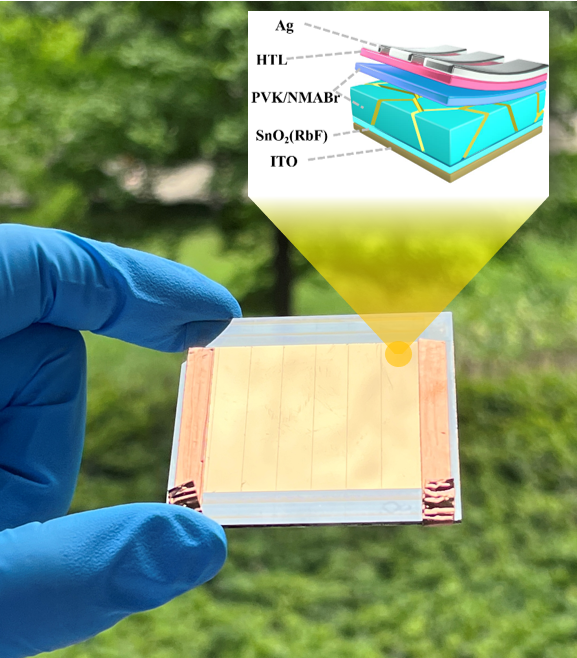An international research team has fabricated a perovskite solar cell that reportedly shows lower non-radiative recombination and defect state density.
“Our study introduces an innovative lead iodide (PbI2) secondary growth and π-π stack regulation strategy that enhances the photovoltaic efficiency and stability of perovskite solar cells,” the research's lead author, Mojtaba Abdi-Jalebi, told pv magazine. “By promoting controlled PbI2 nucleation and crystallization using 4-fluorobenylamide (FBA), we achieved high-quality perovskite films with large grains and minimized defect states, raising cell efficiency from 22.06% to 23.62%.”
π–π stacking interactions consists of a nondestructive noncovalent interaction used in modern chemistry and molecular biology. It offers advantages such as strong binding force, nondestructive fabrication process, and simple operation.
“Through π-π stacking and hydrogen bonding interactions between FBA and the lead iodide (Pb-I) framework, we significantly stabilized the PbI6 skeleton, addressing iodine loss—a key factor in perovskite solar cell degradation,” Abdi-Jalebi said. “This approach not only enhances the resilience of the Pb-I structure under heat and light stress but also achieves a remarkable 96% retention of initial efficiency over 1,300 hours, advancing the path to stable, commercially viable perovskite solar cells.”
The group used a porous PbI2 film with low Gibbs free energy and high crystallinity to build a large-grain, low-defect perovskite absorber. The Gibbs free energy is the available energy of a substance that can be used in a chemical transformation or reaction.

Image: University College LondonMalet Place
The cell was built with a substrate made of indium tin oxide (ITO), an electron transport layer (ETL) made of tin oxide (SnO2), the perovksite absorber, a hole transport layer (HTL) relying on spiro-OMeTAD, a spacer based phenyl-C61-butyric acid methyl ester (PCBM), and a silver (Ag) metal contact.
Tested under standard illumination conditions, the device achieved a power conversion efficiency of 23.62%, an open-circuit voltage of 1.17 V, a short-circuit current density of 26.19 mA/cm2, and a fill factor of 77.24%. A reference cell built without the FBA treatment achieved an efficiency of 22.07%, an open-circuit voltage of 1.15 V, a short-circuit current density of 25.19 mA/cm2, and a fill factor of 76.47%.
The cell was also able to retain 77% of its efficiency after 1,000 h of exposure to air, which compares to 58% for the reference device.
“The target perovskite cell exhibited superior stability in both humidity and thermal stability tests,” the research group explained. “Regulating PbI2 crystallization growth in the sequential deposition method was crucial for optimizing the subsequent growth of perovskite crystals.”
The novel cell concept was presented in the study “Lead iodide secondary growth and π-π stack regulation for sequential perovskite solar cells with 23.62% efficiency,” published in the Chemical Engineering Journal.
The research team comprised scientists from China's Southwest Petroleum University, Chongqing University, and the University College LondonMalet Place in the United Kingdom.
This content is protected by copyright and may not be reused. If you want to cooperate with us and would like to reuse some of our content, please contact: editors@pv-magazine.com.




By submitting this form you agree to pv magazine using your data for the purposes of publishing your comment.
Your personal data will only be disclosed or otherwise transmitted to third parties for the purposes of spam filtering or if this is necessary for technical maintenance of the website. Any other transfer to third parties will not take place unless this is justified on the basis of applicable data protection regulations or if pv magazine is legally obliged to do so.
You may revoke this consent at any time with effect for the future, in which case your personal data will be deleted immediately. Otherwise, your data will be deleted if pv magazine has processed your request or the purpose of data storage is fulfilled.
Further information on data privacy can be found in our Data Protection Policy.